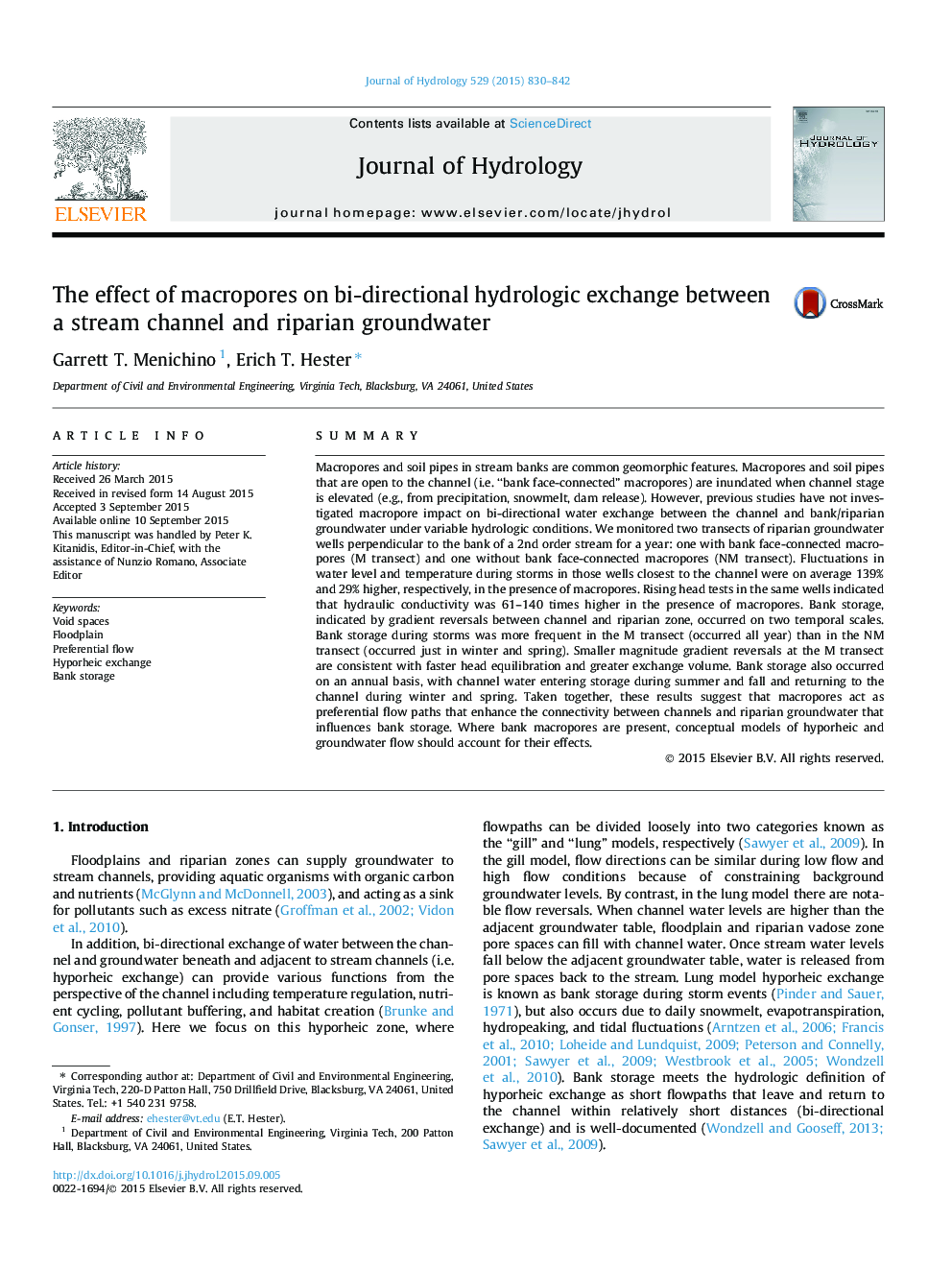| کد مقاله | کد نشریه | سال انتشار | مقاله انگلیسی | نسخه تمام متن |
|---|---|---|---|---|
| 6410702 | 1332885 | 2015 | 13 صفحه PDF | دانلود رایگان |
- Effect of macropores and soil pipes on bank storage near a stream was measured.
- Macropores increased propagation of storm fluctuations into the streambank.
- Macropores increased the frequency of bank storage events in the stream.
- Results have implications during storms, hydropeaking, daily snowmelt.
SummaryMacropores and soil pipes in stream banks are common geomorphic features. Macropores and soil pipes that are open to the channel (i.e. “bank face-connected” macropores) are inundated when channel stage is elevated (e.g., from precipitation, snowmelt, dam release). However, previous studies have not investigated macropore impact on bi-directional water exchange between the channel and bank/riparian groundwater under variable hydrologic conditions. We monitored two transects of riparian groundwater wells perpendicular to the bank of a 2nd order stream for a year: one with bank face-connected macropores (M transect) and one without bank face-connected macropores (NM transect). Fluctuations in water level and temperature during storms in those wells closest to the channel were on average 139% and 29% higher, respectively, in the presence of macropores. Rising head tests in the same wells indicated that hydraulic conductivity was 61-140 times higher in the presence of macropores. Bank storage, indicated by gradient reversals between channel and riparian zone, occurred on two temporal scales. Bank storage during storms was more frequent in the M transect (occurred all year) than in the NM transect (occurred just in winter and spring). Smaller magnitude gradient reversals at the M transect are consistent with faster head equilibration and greater exchange volume. Bank storage also occurred on an annual basis, with channel water entering storage during summer and fall and returning to the channel during winter and spring. Taken together, these results suggest that macropores act as preferential flow paths that enhance the connectivity between channels and riparian groundwater that influences bank storage. Where bank macropores are present, conceptual models of hyporheic and groundwater flow should account for their effects.
Journal: Journal of Hydrology - Volume 529, Part 3, October 2015, Pages 830-842
